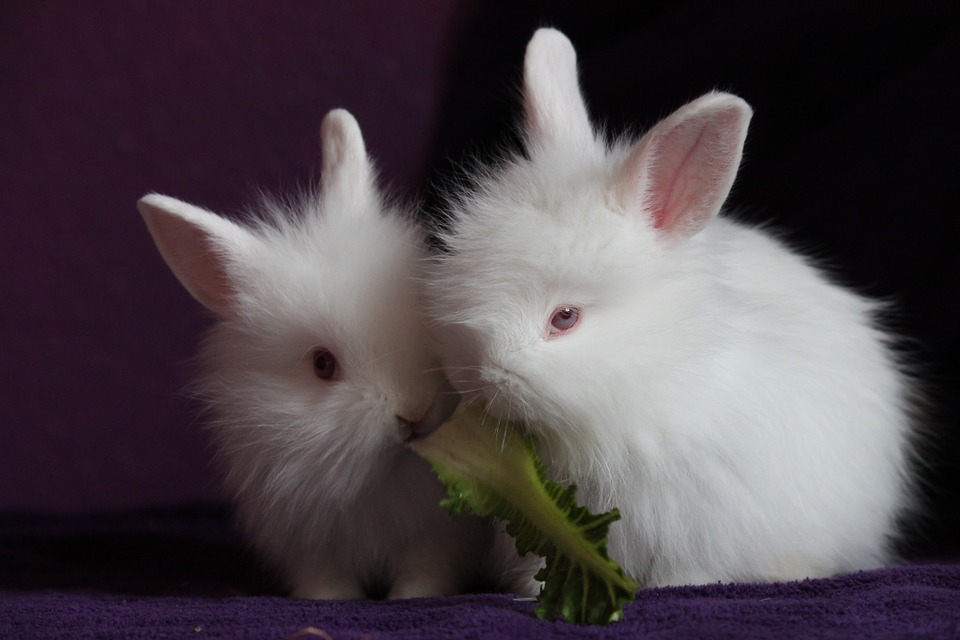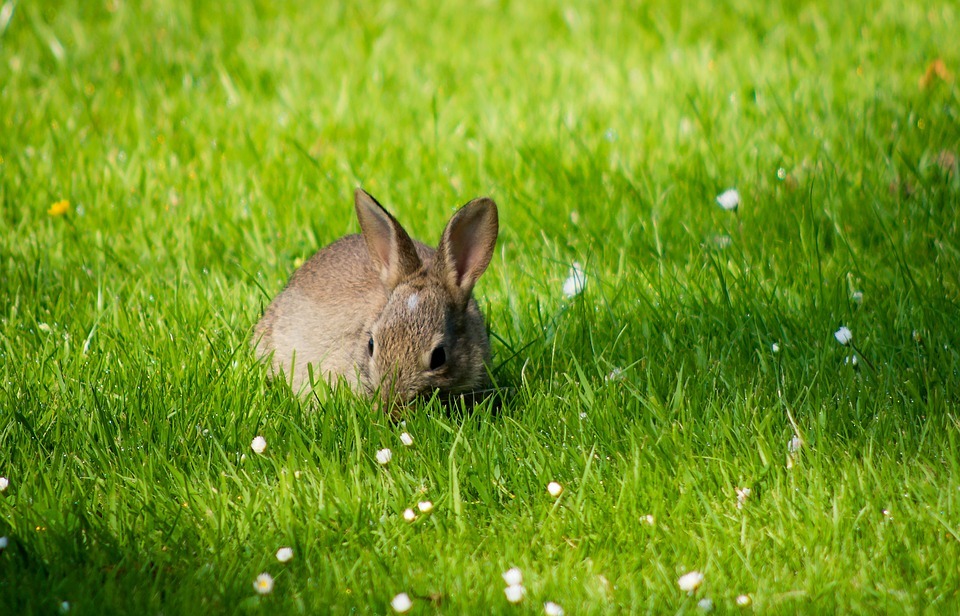This comprehensive guide delves into the fascinating world of rabbits and their classification as mammals. We will explore the defining characteristics of mammals, examine how rabbits fit within this category, and dispel any lingering misconceptions. From their unique reproductive systems to their intricate social structures, we will unravel the intricate complexities that make rabbits truly remarkable creatures. Join us on this journey as we uncover the truth about these beloved animals and their place in the animal kingdom.
Part 1: The Mammalian Family Tree

1.1 Tracing the Mammalian Lineage
- Mammals belong to the class Mammalia, a diverse group of warm-blooded vertebrates that includes over 5,000 species.
- This class diverged from the reptilian lineage around 200 million years ago, during the Triassic period.
- Early mammals were small and nocturnal, evolving alongside dinosaurs but gradually taking on a more dominant role after the dinosaurs' extinction.
1.2 Defining Characteristics of Mammals
- Hair or Fur: All mammals possess hair or fur at some stage in their life cycle, providing insulation, protection from the elements, and even camouflage.
- Mammary Glands: Female mammals produce milk to nourish their offspring, a defining characteristic of the class. This milk provides essential nutrients, antibodies, and immune support for growing young.
- Endothermy: Mammals are warm-blooded, maintaining a stable internal body temperature regardless of external conditions. This allows them to be active across a wide range of environments and times of day.
- Live Birth: Most mammals give birth to live young, with the exception of monotremes like the platypus and echidna, which lay eggs. This mode of reproduction allows for greater parental care and protection of offspring.
- Three Middle Ear Bones: Mammals have three tiny bones in the middle ear: the malleus, incus, and stapes. These bones transmit sound vibrations from the eardrum to the inner ear, enhancing auditory perception and allowing for more sophisticated hearing.
- Four-Chambered Heart: The heart of a mammal comprises four chambers, allowing for efficient blood circulation and oxygenation. This system separates oxygenated blood from deoxygenated blood, providing a robust and effective circulatory system.
- Diaphragm: Mammals possess a muscular diaphragm, which helps with breathing and facilitates efficient gas exchange. This unique feature allows for more efficient respiration and enables mammals to sustain higher levels of activity.
- Highly Developed Nervous System: Mammals have large brains with complex structures, enabling sophisticated behaviours, cognitive abilities, and intricate social interactions. This advanced nervous system contributes to their learning abilities, problem-solving skills, and the capacity for complex communication.
Part 2: Unmasking the Mammal Within: Rabbits' Mammalian Traits

2.1 The Case for Fur: A Defining Feature
- Rabbits are covered in a thick layer of soft fur, offering exceptional insulation and camouflage.
- Their fur consists of guard hairs, which provide protection and water resistance, and down hairs, which create a dense, insulating layer.
- Rabbits shed their fur periodically, usually in the spring and autumn, to adapt to changing temperatures and maintain a healthy coat.
2.2 The Milk Makers: Mammary Glands in Action
- Female rabbits possess mammary glands, located along the abdomen, which produce milk to nourish their young, called kits.
- Rabbits typically have four pairs of mammary glands, enabling them to feed a large litter of kits.
- The milk provides vital nutrients, including fats, proteins, and antibodies, ensuring the healthy development of the kits.
2.3 Keeping a Cool Head: Endothermy in Rabbits
- Rabbits are warm-blooded, maintaining a constant body temperature around 38°C (100.4°F) regardless of external temperature fluctuations.
- Their fur provides excellent insulation, helping to trap heat in cold environments. In hot weather, they pant to release excess heat.
- This ability to regulate body temperature allows rabbits to be active throughout the year and thrive in a wide range of climates.
2.4 A Birth Story: Live Birth in Rabbits
- Rabbits give birth to live young, called kits, after a gestation period of approximately 30 days.
- Kits are born blind and hairless, making them entirely reliant on their mother's milk for nourishment and warmth.
- Female rabbits typically give birth in a safe burrow, providing protection for the vulnerable kits.
2.5 Beyond the Basics: Other Mammalian Features in Rabbits
- Rabbits possess three middle ear bones, just like all other mammals, crucial for their ability to hear and locate sounds in their environment.
- Their four-chambered heart efficiently pumps blood throughout their body, delivering oxygen and nutrients while removing waste products.
- The muscular diaphragm in rabbits aids in breathing, allowing them to take in oxygen and expel carbon dioxide, essential for their survival.
Part 3: The Unique Traits of Rabbits
3.1 The Digestive System: A Masterpiece of Herbivory
- Rabbits have a specialized digestive system perfectly adapted for a herbivorous diet, relying primarily on plants for their energy and nutrients.
- They practice caecotrophy, a fascinating process where they consume their own soft, nutrient-rich faecal pellets (cecotropes), enabling them to extract the maximum amount of nutrients from plant matter.
- This unique digestive strategy allows them to efficiently digest cellulose, the main component of plant cell walls.
3.2 The Bunny Boom: Reproduction in Rabbits
- Rabbits are renowned for their impressive reproductive rates, often having multiple litters per year.
- They exhibit superfecundity, which means females can become pregnant again very soon after giving birth, allowing for rapid population growth.
- Kits mature quickly, reaching sexual maturity within a few months, further contributing to their prolific breeding potential.
3.3 Social Structures: A World of Communication and Bonding
- Rabbits exhibit complex social behaviours, communicating through scent marking, vocalizations, and body language.
- They live in burrows, called warrens, which provide shelter, protection from predators, and a place to raise their young.
- Rabbits form strong social bonds within their groups, with intricate hierarchies and complex communication patterns.
Part 4: Dispelling Common Misconceptions
4.1 Rabbits vs. Rodents: A Tale of Two Orders
- While rabbits and rodents share some superficial similarities, they belong to different orders: Lagomorpha (rabbits) and Rodentia (rodents).
- Key distinctions include the number of incisor teeth (rabbits have four, rodents have two), the structure of their digestive systems, and their overall evolutionary history.
- Rodents have a single pair of constantly growing incisors, while rabbits have two pairs, with the second pair located behind the first.
4.2 Beyond the Pet: The Importance of Wild Rabbits
- While domestic rabbits are popular pets, wild rabbits are essential members of various ecosystems around the world.
- Wild rabbits serve as prey for a variety of predators, helping to regulate predator populations and maintain a healthy ecosystem balance.
- They also play a crucial role in seed dispersal, contributing to plant diversity and the health of plant communities.
Part 5: Rabbit FAQ: Answers to Your Burning Questions
5.1 What Do Rabbits Eat? A Herbivore's Diet
- Rabbits are herbivores, meaning they primarily feed on plants.
- Their diet consists of grasses, herbs, vegetables, and hay, providing the necessary fiber and nutrients for their digestive system to function properly.
- A balanced diet is essential for their health and well-being, and they should avoid foods that are toxic or harmful, such as chocolate, onions, and garlic.
5.2 How Long Do Rabbits Live? A Look at Lifespan
- The lifespan of a rabbit varies depending on breed, living conditions, and overall health.
- On average, domestic rabbits live for 5-8 years, while wild rabbits typically live for 1-2 years.
- Providing proper nutrition, exercise, regular veterinary care, and a safe, enriching environment can significantly extend a rabbit's lifespan.
5.3 Are Rabbits Poisonous? A Look at Safety
- Rabbits are not poisonous.
- However, their urine and faeces can contain bacteria that may cause illness if not handled properly.
- It is crucial to maintain good hygiene when interacting with rabbits and their enclosures, washing hands thoroughly after handling them or their bedding.
5.4 Why Do Rabbits Hop? An Exploration of Locomotion
- Hopping is a distinctive form of locomotion for rabbits, providing them with exceptional agility and speed.
- Their long hind legs and powerful muscles enable them to leap significant distances, allowing them to quickly escape predators and navigate uneven terrain.
- Hopping is also an energy-efficient method of travel, particularly over long distances, minimizing energy expenditure.
5.5 Can Rabbits Be Trained? A Look at Intelligence and Trainability
- Rabbits are intelligent creatures and can be trained with patience and positive reinforcement.
- They can learn basic commands, tricks, and even litter box training, demonstrating their ability to learn and respond to cues.
- Training helps to strengthen the bond between rabbits and their owners, promoting mutual understanding and enriching their lives.
5.6 Are Rabbits Social Animals? Exploring Social Interactions
- Rabbits are social animals and thrive in the company of other rabbits.
- They form strong social bonds within their groups, communicating through scent marking, vocalizations, and body language.
- While solitary rabbits may survive, they are often happier and healthier when living with other rabbits, providing companionship and emotional support.
5.7 Are Rabbits Good Pets? A Look at Rabbit Care
- Rabbits can make wonderful pets, offering companionship, entertainment, and unique personalities.
- However, responsible rabbit ownership requires research, commitment, and a willingness to provide them with proper care, including a safe and enriching environment, a balanced diet, regular veterinary check-ups, and social interaction.
- Before adopting a rabbit, it's important to understand their needs and be prepared to provide them with a fulfilling life.
Everyone is watching
-

Do Rabbits Lay Eggs? (The Surprising Truth)
OTHER TYPES OF PETSThis article will unravel the common misconception that rabbits lay eggs, exploring the fascinating world of r...
-

What's a Group of Rabbits Called? (A Comprehensive Guide)
OTHER TYPES OF PETSThis article delves into the fascinating world of rabbits, exploring the various terms used to describe a grou...
-

Can Rabbits Eat Grapes? A Guide to Safe Rabbit Treats
OTHER TYPES OF PETSThis comprehensive guide will explore the safety and suitability of grapes for rabbits, providing detailed inf...
-

Predators That Hunt Rabbits: A Guide to Natural Enemies
OTHER TYPES OF PETSI've always been fascinated by the circle of life, that delicate dance between predator and prey. Growing up ...
-

Are Rabbits Nocturnal Animals?
OTHER TYPES OF PETSThe question of whether rabbits are nocturnal animals is a fascinating one, with a surprisingly complex answer...
